No one likes being ‘hangry’, least of all your horse. Just like humans, when horses don’t get enough food, they can be irritable and hard to work with. But unlike humans who can return to a happy, contented state after fasting, it can have a far more damaging impact on horses.
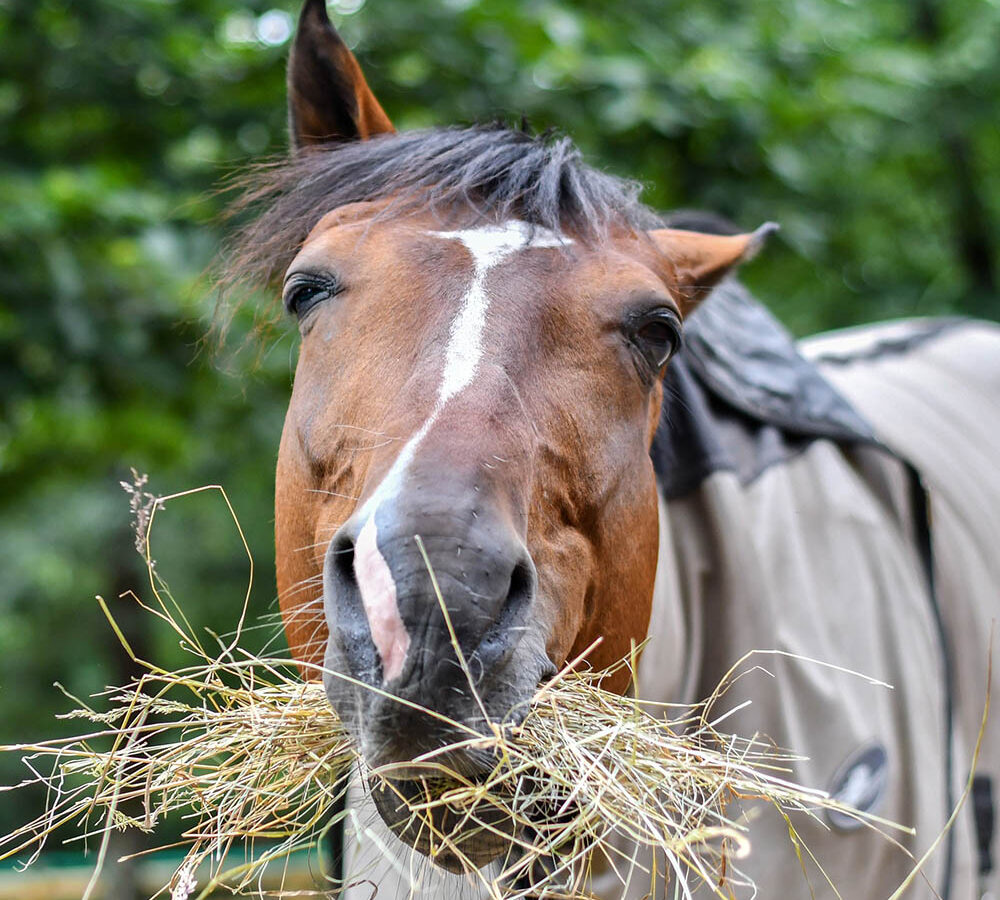
“Their stomach continuously produces acid
whether they’re eating or not.”
A horse’s stomach is an incredibly sensitive and balanced instrument, and when it gets out of tune, the horse is going to let you know about it! This is because when a horse’s stomach is left empty for hours on end, a continuous supply of acid can be bubbling away and burn ulcers in the stomach walls.
The horse is naturally a grass-feeding animal and is designed to be continually eating all day. Millions of years of grazing evolved a stomach that is conditioned to always have something in it. As a result, the upper half of a horse’s stomach (called the non-glandular region) is unprotected from stomach acid, because for countless generations there wasn’t risk of contact because the stomach always had something in it and acid production was not excessive.
“Unlike us, their stomach continuously produces acid whether they’re eating or not,” explains Hygain equine nutritionist Holly Mills. “If there is a period of time where they’re not eating, that stomach acid is still being produced and can build up. Having food in the stomach will actually soak up some of that acid because it’s used to break down the food. But it also creates a mat over that acid as well and it prevents the acid from splashing up and burning the stomach walls. As you can imagine this is quite painful and can affect your horse’s general well-being, performance, and behaviour. A horse’s saliva also plays a really important role here too. A horse only produces saliva when it’s eating, and it also naturally buffers the stomach as well,” says Holly.
CHANNELLING A STEADY STREAM
“Ideally, horses need constant access to roughage 24/7, but that’s not always possible for some owners. If you don’t have enough pasture in the paddock, which most people really don’t, the best thing you can do is just try and provide constant access to hay. Roughage or hay makes up a massive percentage of a horse’s daily intake and a lot of people think that they’re providing enough, but unfortunately, they’re not. That’s why ulcers are quite prevalent in our equine society at the moment.”
The minimum amount of roughage for horses is 1.5% of their body weight per day, which as you can imagine, can be a lot for big horses. You could find that you are feeding the right amount, but it’s still not lasting all day because your horses go at their feed like a kid in a lolly shop!
“As long as they’re chewing and have something going in there, that’s really the most important thing,” explains Holly. “When you do feed hay, some horses will just inhale it and eat it all within an hour. So activities like hay balls, slow feeder hay nets, or something that can keep younger horses occupied are great because you’re still giving them that constant roughage but at a slow, steady pace.”
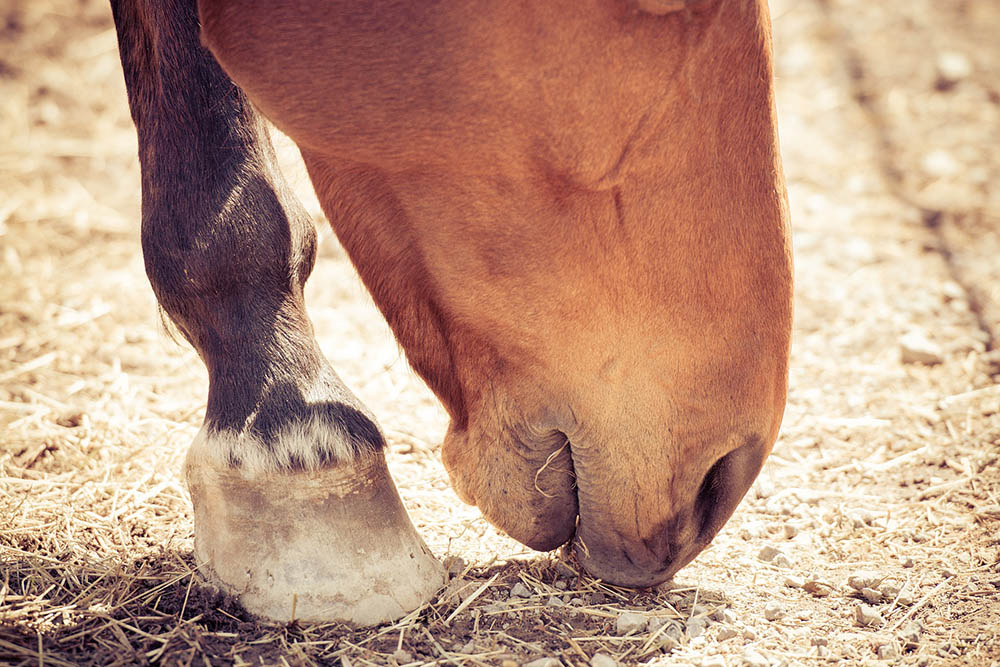
“Acid buffers act as a barrier
on top of the stomach.”
PREVENTION OVER CURE
Luckily, there are tools owners can use to help prevent any damage from stomach acid if the horse’s roughage intake isn’t constant. Acid buffers increase the pH in the stomach which helps stop the acid from splashing around and creating damage that may lead to ulcers. They can come in several forms, from manufactured acid buffer powders to naturally occurring ones that you may not realise you’re already feeding.
“Lucerne hay or lucerne chaff are also acid buffers because they contain a high level of calcium which acts as the buffer,” explains Holly. “It raises the pH of the stomach, making the stomach acid less acidic. So lucerne is a great pre-ride or pre-travel meal for that reason. Then for a more concentrated, scientific acid buffer that comes in a powdered form, it could be something like red seaweed extract. It also has high levels of calcium which has a honeycomb-like structure, which means it has a high surface area and is able to interact with the acid in the stomach at an elite level and be quite an effective buffer.”
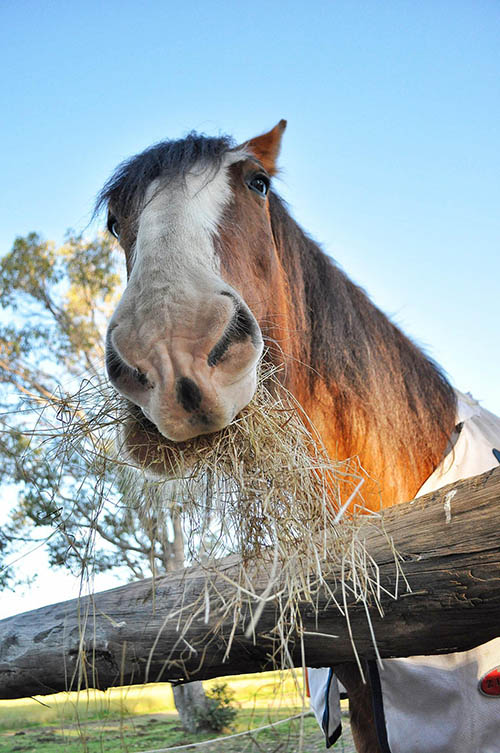
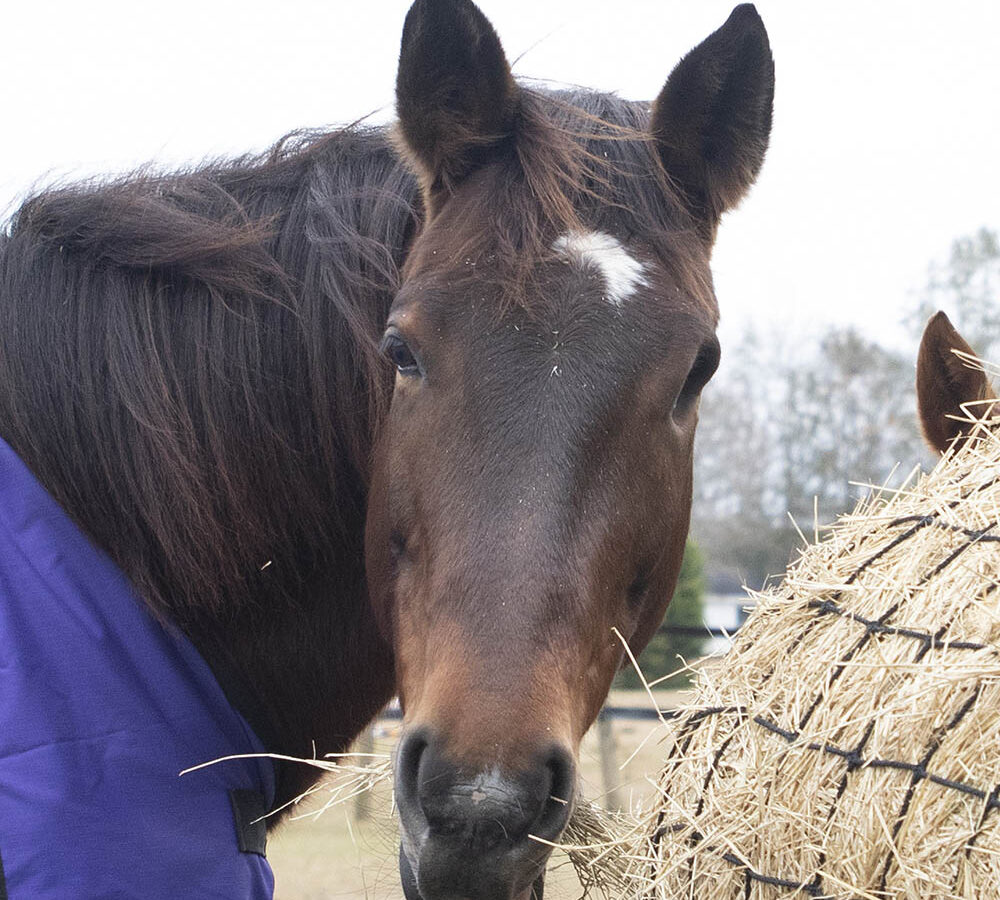

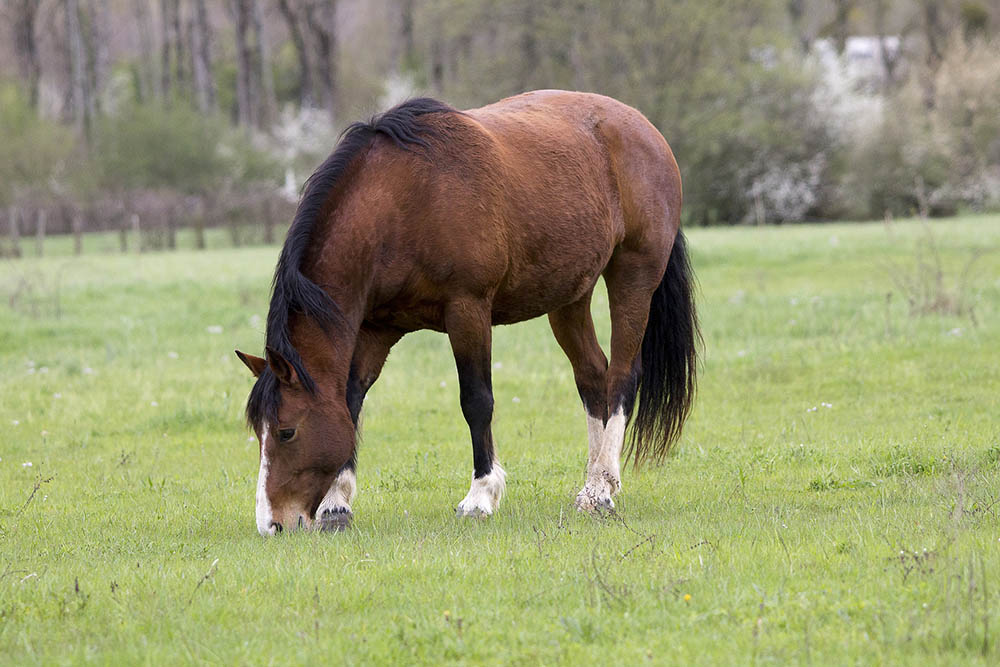
If you’re looking for an acid buffer that can be easily added to your horse’s current diet, there is an easy option available in the form of a powdered supplement. Hygain has recently released a new product called DIGEST & PROTECT®, which contains the red seaweed extract (lithothamnion calcareum) Holly mentioned earlier and is an effective acid buffer. On top of that, it also has pre- and probiotics for digestive support, and ingredients like slippery elm that help coat the stomach.
But what if you suspect your horse has already started to develop trouble with their stomach because of low roughage levels?
“The first thing I would do is try to make sure that your horse isn’t standing around not eating,” says Holly. “That can be a sign that they might have some pains going on in their stomach, which is unfortunate because it’s kind of just making the issue worse when they’re not eating. Other classic signs would be irritable behaviour, acting girthy, and being particularly sensitive when in work or even just being groomed.”
Once you have established that something may be wrong, you can then employ the help of acid buffer supplement powder, or if the issue is more urgent, reach out to your vet to get your horse’s stomach scoped and they will suggest some medicinal products.
DISPELLING THE MYTHS
You may have heard in the horse community before that you shouldn’t feed your horse before work, but Holly says this is one of the worst things you can do.
“It’s a common myth that you shouldn’t feed your horse before they get worked. We always recommend providing access to feed before you ride because otherwise you’re creating that empty stomach and then asking them to trot around and the acid is just able to splash up everywhere. Again, lucerne is a great option here, or you know if you want to give them a little bit of extra feed then you can always put in a powdered supplement.” EQ
You can find out more about Hygain Digest & Protect here.
YOU MIGHT ALSO LIKE TO READ:
Maximising Absorption in Your Horse’s Diet – Equestrian Life, April 2022
Finding the Way Back to the Saddle – Equestrian Life, February 2022
Electrolytes: Getting Out What You Put In – Equestrian Life, January 2022
A Good Gut Feeling for Performance Horses – Equestrian Life, December 2021
Gary’s Guide to Building Lean Muscle – Equestrian Life, November, 2021
In a Bind: The Role of Toxin Binders – Equestrian Life, October, 2021
Hold Your Horses: Feeding for Coolness – Equestrian Life, September, 2021
The Importance of Vitamin K – Equestrian Life, August, 2021

